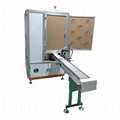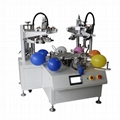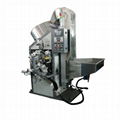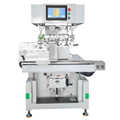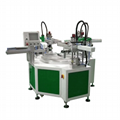| Model: | PM-510FL |
|---|---|
| Brand: | KC |
| Origin: | Made In China |
| Category: | Industrial Supplies / Plate Making & Printing Machine |
| Label: | film machine , film making machine , film output |
| Price: |
US $7275
/ pc
|
| Min. Order: | 1 pc |
| Last Online:30 May, 2025 |
1. Negative and positive films
• Definition:
• Positive films refer to films where the image on the film is consistent with the image on the actual printed product, that is, the image part is transparent and the non-image part is black (or other opaque colors). In the printing platemaking process, positive films can be used directly for platemaking to expose the photosensitive material of the image part, and then form a printing plate after subsequent processing.
• Negative films are the opposite. The image part on the film is black (or other opaque colors) and the non-image part is transparent. It requires special processes or conversions to be used for platemaking.
• Application scenarios:
• Positive films are often used in traditional platemaking processes such as lithography and letterpress printing. For example, when making plates for simple leaflets, book pages and other printed materials, using positive films to directly make plates can quickly and efficiently make printing plates.
• Negative films are used in some special printing processes or platemaking that requires special effects. For example, they are used when making some printed products that require a reverse effect, or when making some printing plates with special layer structures.
2. Dot film
• Definition:
• Dot film is a film that uses dots to express the layers and colors of an image. Dots are the basic units that make up an image. The size, shape, density and distribution of dots are used to simulate continuous-tone images. In printing, after dots of different sizes are inked on a printed product, the human eye will mix them and see them as continuous tones.
• Application scenarios:
• Widely used in color printing, such as magazines, posters, packaging, etc. For example, in the printing of a high-quality fashion magazine, dot film is used to accurately control the color reproduction and layer expression of color pictures, so that the pictures of clothing, cosmetics, etc. in the magazine can truly present the original color and texture.
3. Gradient film
• Definition:
• Gradient film is mainly used to express the light and dark layers of an image. It uses different gray levels to reflect the transition from light to dark in the image. Gradients can be continuous or simulate continuous tones through a certain combination of dots.
• Application scenarios:
• It is widely used in black and white printing and some printed products with high grayscale requirements. For example, in black and white art album printing, the gradient film can accurately reproduce the light and dark contrast of the painting, so that the works of art such as ink painting can show the charm of the original on the printed products.
4. High-density film
• Definition:
• High-density film refers to film with high optical density. High optical density means that the film has a strong ability to block light, and can provide clearer details and more accurate density control in the fine parts and high-contrast parts of the image.
• Application scenarios:
• Commonly used in high-precision printing, such as currency printing, securities printing, high-end album printing, etc. For example, in currency printing, high-density film can ensure that the anti-counterfeiting patterns, fine lines and other details on the currency can be accurately copied to the printing plate, thereby ensuring the anti-counterfeiting performance and printing quality of the currency.
5. Laser imagesetter
• Definition:
• Laser imagesetter is a device that outputs text, images and other information in a computer as film. It uses a laser beam to expose the photosensitive material (film) and accurately forms graphic information on the film according to the typesetting instructions in the computer.
• Working principle:
• The computer converts the typesetting graphic information into digital signals. After receiving these signals, the laser imagesetter controls the scanning path and intensity of the laser beam. The laser beam scans and exposes the photosensitive layer of the film, causing the photosensitive material of the graphic part to undergo a photochemical reaction. After subsequent processing such as development and fixing, the required film is obtained.
• Application scenarios:
• Widely used in the printing platemaking industry. In the traditional printing process, whether it is newspapers, magazines, books or other printed materials, laser imagesetters are needed in the process of making films. It is a key device for converting digital typesetting information into films required for printing platemaking.
|
PM-510FL Laser film imagine setter usage and characters |
|
|
Guide |
|
|
Application fields |
Film output during plate-making process of: pad printing, screen printing , Letterpress, Adhesive sticker printing, Bronzing, Middle-precision Grave printing, Middle-precision Offset Printing .Garment screen printing field. |
|
PM-510FL Laser film imagine setter parameter |
|
|
Technical parameters |
|
|
Works supply |
|
|
Package list |
|
|
H.S.Code |
90065910 |
|
Certicate |
CE |
|
PM-510FL Laser imagine setter advantage |
|
|
Function |
|
| Embed HTML Code: | |
|---|---|
| Application: | Traditional printing technology requires plate making, and plate making also mostly requires printing negatives to distinguish between printed and non-printed areas. The task of making plate negatives is mainly done by the film output machine. The manuscripts designed by design software such as Coreldraw or photoshop are rasterized by RIP, recorded on the film by the laser head of the film output machine to form graphic and non-graphic areas, and then developed and fixed to form the printing plate. Printing negatives is a key element in making high-quality printing plates. In the field of special printing, such as pad printing, silk screen printing, hot stamping, etc., where precision is not required, the requirements for exposure film are: The format is not large, the quantity is not high, and the requirements are not strict, then the use of high-end laser imagesetters is a big deal. Therefore, film output machines specially designed and produced for these printing market segments came into being. |
| Advantages: | Most printing processes require printing plates, especially in the field of special printing, such as pad printing, screen printing, hot stamping, flexo printing, offset printing, and gravure printing. Some printing processes with higher technical barriers are developing towards computer direct platemaking technology (CTP), that is, using computer control to directly output the design draft stored in the computer to the printing plate to form a printing plate. Offset printing, flexo printing, and screen printing are relatively mature. Some printing processes with lower technical barriers still follow the traditional platemaking process. First, the image and text are output to the platemaking film, and then the platemaking film is used to cover the printing plate to make the printing plate. Pad printing, screen printing, and hot stamping still retain this process. The platemaking film which is formed by coating a photosensitive layer on a PET film. The transparent area of the platemaking film will transmit ultraviolet light, and the non-transparent area will block light. The photosensitive layer will solidify in the area that transmits ultraviolet light, and the photosensitive layer will not solidify in the area that does not transmit ultraviolet light, and will be washed away during development and washing. Most pad printers, screen printers, and hot stamping machine operators are small-scale investors with meager profits, and may not be willing to buy expensive laser phototypesetters. However, the KC series laser phototypesetters are inexpensive, have moderate accuracy, and are easy to operate. They usually recover their costs in about three months. If you are engaged in pad printers, screen printers, and hot stamping machine processing business, or provide film output and plate making business for other printing factories, you can consider the KC brand laser phototypesetter. |

